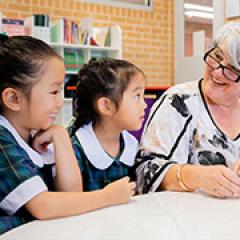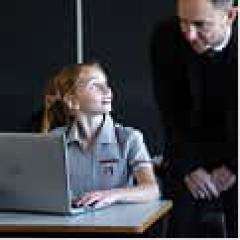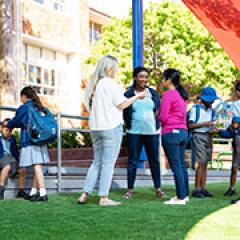Education delivered with care and compassion
We prioritise practices and approaches in wellbeing for learning to ensure that each child is known, challenged and supported to be the very best they can be. Our care for our students arises from our recognition that every person is made in the image and likeness of God and that their worth and dignity is precious.
Whole school approaches are implemented using a tiered system that provides students with the necessary supports to thrive and flourish. Leadership teams in schools understand their school community deeply and make local decisions on the wellbeing supports and strategies implemented. School counselling services are available in all schools for students requiring individualised short term clinical support. Counsellors also work with small groups of children for support.
Initiatives in schools include a focus on restorative practices and our Learning Everyday Counts strategy. Schools may also support student wellbeing with the implementation of the Positive Behaviour for Learning (PBL) framework, Seasons for Growth, Rock and Water, and other evidence-based practices.
Teaching programs support equitable and ongoing participation of Aboriginal and Torres Strait Islander students by engaging in collaborative relationships with families and community representatives.






